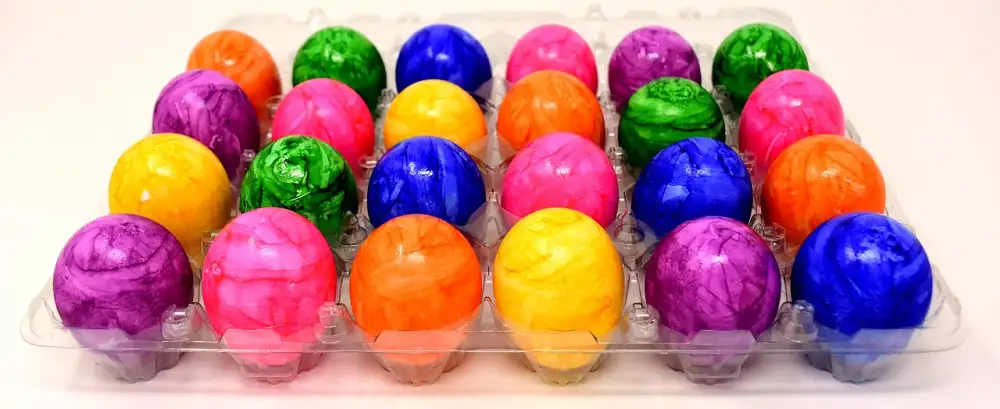Bake the Perfect Easter Bread: A Traditional Recipe to Delight Your Home

Easter is a time of joy and celebration, and what better way to mark the occasion than with a delicious homemade Easter bread? This traditional delicacy has been enjoyed for centuries and holds a special place in many cultures around the world. With its rich history and mouthwatering flavors, Easter bread is sure to delight your home and add a touch of warmth to your holiday festivities. Whether you're an experienced baker or just starting out, this article will guide you through the process of creating the perfect Easter bread that will impress your family and friends. So roll up your sleeves, gather your ingredients, and let's get started on this delightful culinary journey!
History and Significance of Easter Bread
Easter bread, also known as Pascha or Kulich, has a rich history and holds great significance in many cultures around the world. Its origins can be traced back to ancient times when bread was considered a sacred food symbolizing fertility and rebirth.
In Christian traditions, Easter bread is closely associated with the resurrection of Jesus Christ. It represents the body of Christ and is often baked in a cylindrical shape to symbolize the tomb from which he emerged. The use of eggs in Easter bread is also significant as they represent new life and the resurrection.
Different regions have their own unique variations of Easter bread, each with its own cultural significance. In Eastern European countries like Russia, Ukraine, and Poland, it is an essential part of Easter celebrations. The bread is often decorated with intricate designs using icing or sprinkled with powdered sugar to symbolize purity and joy.
Easter bread is not only a religious symbol but also a way for families to come together and celebrate this joyous occasion. It is often prepared with love and shared among loved ones during Easter gatherings.
The history and significance of Easter bread remind us of the deep-rooted traditions that bring communities together and celebrate the spirit of renewal and hope during this special time of year.
Ingredients Required for Easter Bread
To bake the perfect Easter bread, you will need the following ingredients:
1. Flour: Use all-purpose flour or bread flour for best results. You will need around 4 cups of flour.
2. Yeast: Active dry yeast or instant yeast can be used. Make sure it is fresh and active to ensure proper rising of the dough.
3. Milk: Use warm milk to activate the yeast and add moisture to the bread. Around 1 cup of warm milk is required.
4. Sugar: To add sweetness to the bread, use granulated sugar. You will need around ½ cup of sugar.
5. Butter: Unsalted butter adds richness and flavor to the bread. You will need around ½ cup of softened butter.
6. Eggs: Eggs provide structure and moisture to the dough. You will need 3 large eggs.
7. Salt: Add a pinch of salt to enhance the flavor of the bread.
8. Raisins and/or candied fruits (optional): Traditional Easter bread often includes raisins or candied fruits for added texture and sweetness.
9. Spices (optional): Some recipes call for spices like cinnamon, nutmeg, or cardamom to add warmth and aroma to the bread.
Make sure you have these ingredients ready before starting your Easter bread baking adventure!
Step-by-Step Instructions to Make Easter Bread
1. In a large mixing bowl, combine 2 cups of flour, ½ cup of sugar, and 1 packet of yeast. Mix well.
2. In a separate bowl, whisk together 3 eggs, ½ cup of melted butter, and 1 teaspoon of vanilla extract.
3. Gradually add the egg mixture to the dry ingredients and mix until a sticky dough forms.
4. Slowly add in another 2 cups of flour while continuing to mix until the dough becomes smooth and elastic.
5. Knead the dough on a lightly floured surface for about 5 minutes until it becomes soft and pliable.
6. Place the dough in a greased bowl, cover with a clean kitchen towel, and let it rise in a warm place for about 1 hour or until doubled in size.
7. Punch down the risen dough and divide it into three equal parts.
8. Roll each portion into a long rope shape and braid them together tightly.
9. Transfer the braided bread onto a baking sheet lined with parchment paper.
10. Cover with the kitchen towel again and let it rise for another 30 minutes.
11. Preheat your oven to 350°F (175°C) while waiting for the bread to rise.
12. Brush the risen bread with an egg wash made from beaten egg yolk mixed with a tablespoon of water.
13. Bake in the preheated oven for about 25-30 minutes or until golden brown on top.
14. Remove from the oven and let it cool completely before serving.
Follow these simple steps to create a delicious homemade Easter Bread that will impress your family and friends!
Tips and Tricks for Perfect Easter Bread
1. Use high-quality ingredients: To achieve the best flavor and texture, opt for fresh and high-quality ingredients. This includes using fresh yeast, good quality flour, and organic eggs.
2. Activate the yeast properly: Yeast is a crucial ingredient in Easter bread. Make sure to activate it properly by dissolving it in warm water with a pinch of sugar. Let it sit for a few minutes until it becomes frothy before adding it to the dough.
3. Knead the dough thoroughly: Proper kneading helps develop gluten, which gives the bread its structure and elasticity. Knead the dough until it becomes smooth and elastic, usually around 8-10 minutes.
4. Allow sufficient rising time: The dough needs enough time to rise and double in size before baking. Find a warm spot in your kitchen or use a proofing box to speed up the process.
5. Add flavors creatively: While traditional Easter bread is delicious on its own, you can experiment with additional flavors like lemon zest, orange blossom water, vanilla extract, or even dried fruits and nuts to enhance its taste.
6. Decorate with care: After shaping your Easter bread into braids or other desired shapes, brush it with an egg wash for a glossy finish. You can also add sprinkles or colored sugar before baking to make it more festive.
7. Bake at the right temperature: Preheat your oven properly and bake your Easter bread at the recommended temperature mentioned in the recipe. This ensures even baking and prevents over or undercooking.
8. Test for doneness: To check if your Easter bread is fully baked, insert a toothpick into the center of the loaf. If it comes out clean or with just a few crumbs attached, then it's done.
Remember that practice makes perfect when it comes to baking Easter bread! Don't be discouraged if your first attempt isn't flawless. With time and experience, you'll master the art of making the perfect Easter bread to delight your home.
Variations and Additions to Easter Bread
While the traditional Easter bread recipe is delicious on its own, there are various ways to add a personal touch and experiment with flavors. Here are some popular variations and additions to consider:
1. Raisins and Dried Fruits: For a fruity twist, add a handful of raisins or other dried fruits like cranberries or chopped apricots to the dough. Soak them in warm water or rum beforehand for added moisture and flavor.
2. Citrus Zest: Enhance the aroma by incorporating grated lemon or orange zest into the dough. The bright citrus notes will give your Easter bread a refreshing taste.
3. Nuts: Chopped nuts such as almonds, walnuts, or pistachios can provide a delightful crunch to your bread. Mix them into the dough before shaping it.
4. Spices: Experiment with spices like cinnamon, nutmeg, or cardamom to infuse warm and fragrant undertones into your Easter bread. Sprinkle them over the dough while kneading for an even distribution.
5. Chocolate: For chocolate lovers, consider adding chocolate chips or chunks to the dough for a decadent treat. You can also drizzle melted chocolate over the baked bread for an irresistible finishing touch.
6. Decorative Toppings: Make your Easter bread visually appealing by adding decorative toppings before baking. Common options include colored sugar sprinkles, sliced almonds, or even candied fruit.
Remember that these variations are just suggestions; feel free to get creative and tailor the recipe to suit your preferences! However, be cautious not to overload the dough with too many additions as it may affect its texture and rise.
By exploring these variations and additions, you can create unique Easter breads that cater to different tastes and preferences within your household or among guests during this festive season
Serving and Storing Easter Bread
Once your Easter bread is baked to perfection, it's time to serve and enjoy this delightful treat. Traditionally, Easter bread is served as a centerpiece during the Easter meal or as a special addition to the breakfast table. It can be sliced and served on its own, or paired with butter, honey, or jam for added flavor.
To store your Easter bread, ensure it has completely cooled down before wrapping it tightly in plastic wrap or storing it in an airtight container. This will help maintain its freshness and prevent it from drying out. You can also freeze any leftover bread by wrapping it in aluminum foil and placing it in a freezer-safe bag. When ready to enjoy again, simply thaw at room temperature or reheat in the oven for a few minutes.
Remember that Easter bread tastes best when enjoyed within a few days of baking. As time passes, the texture may become slightly dry, but fear not - you can still repurpose any leftover slices by using them for French toast or bread pudding recipes.
Whether you're serving Easter bread as part of a festive meal or enjoying it as a sweet morning treat, its delicious taste and symbolic significance are sure to bring joy to your home during this special holiday season.
In conclusion, Easter bread is not just a delicious treat but also a symbol of tradition and celebration. Its history dates back centuries, and it holds great significance in various cultures around the world. By following the step-by-step instructions and using the right ingredients, you can create a beautiful and flavorful Easter bread at home. Remember to be patient during the rising process and pay attention to details like braiding or shaping the dough. Don't be afraid to experiment with different variations and additions to make your Easter bread unique. Whether you serve it as part of a festive meal or enjoy it with a cup of tea, this traditional bread is sure to delight your home and bring joy to your loved ones during the Easter season. Happy baking!
Published: 22. 02. 2024
Category: Home



